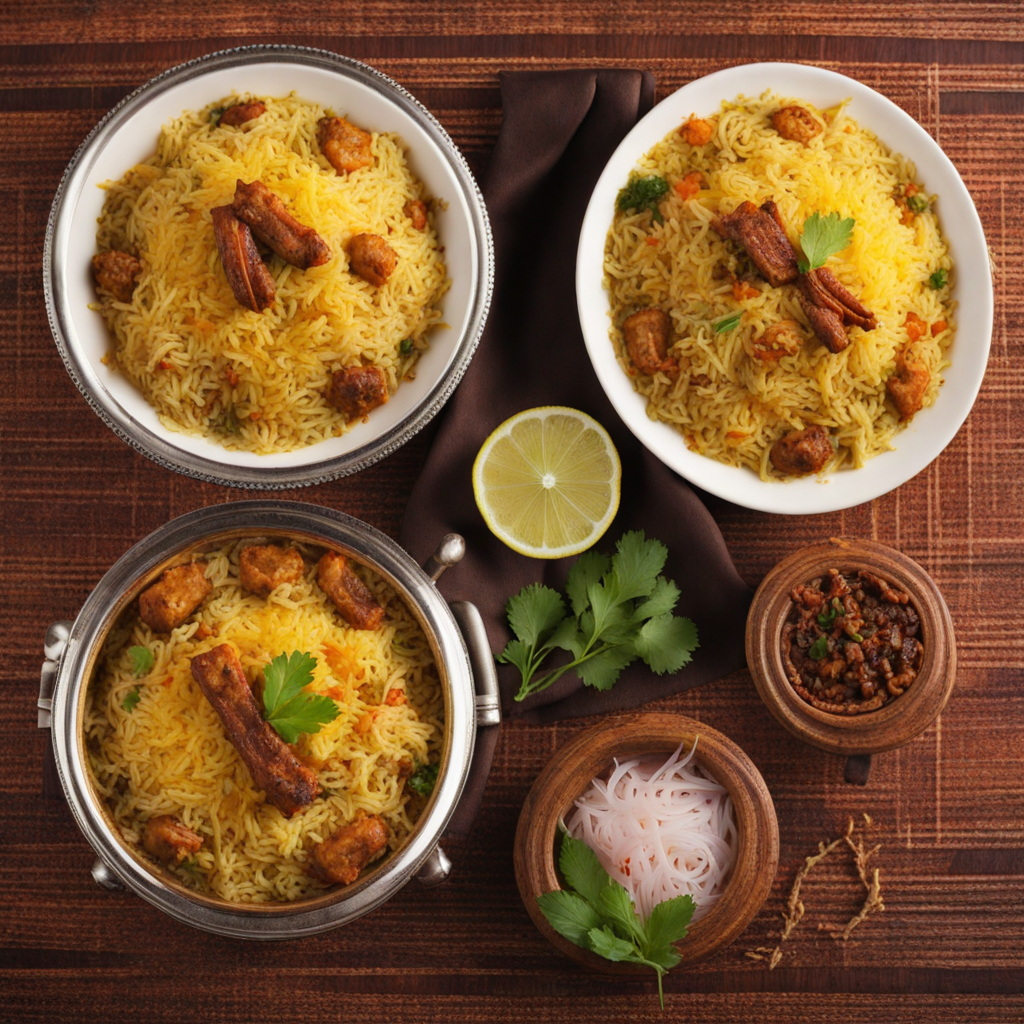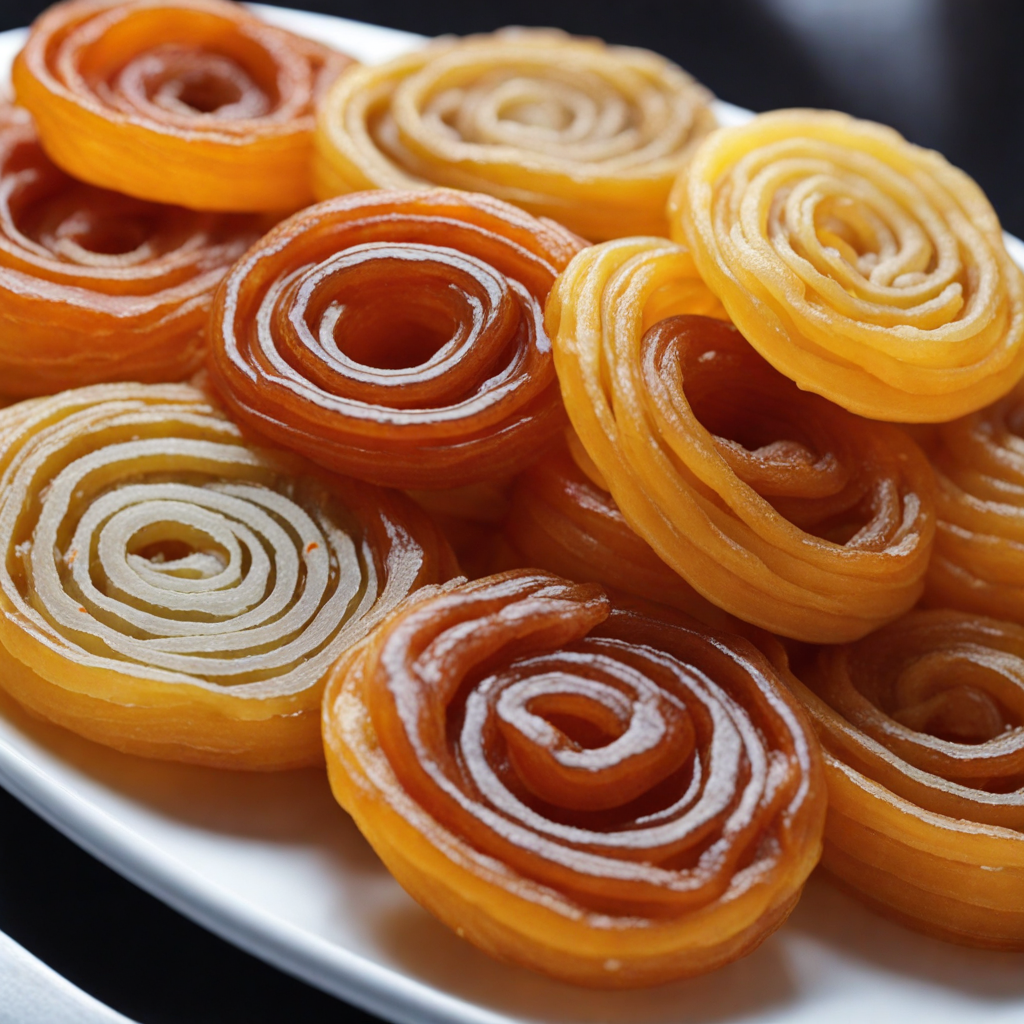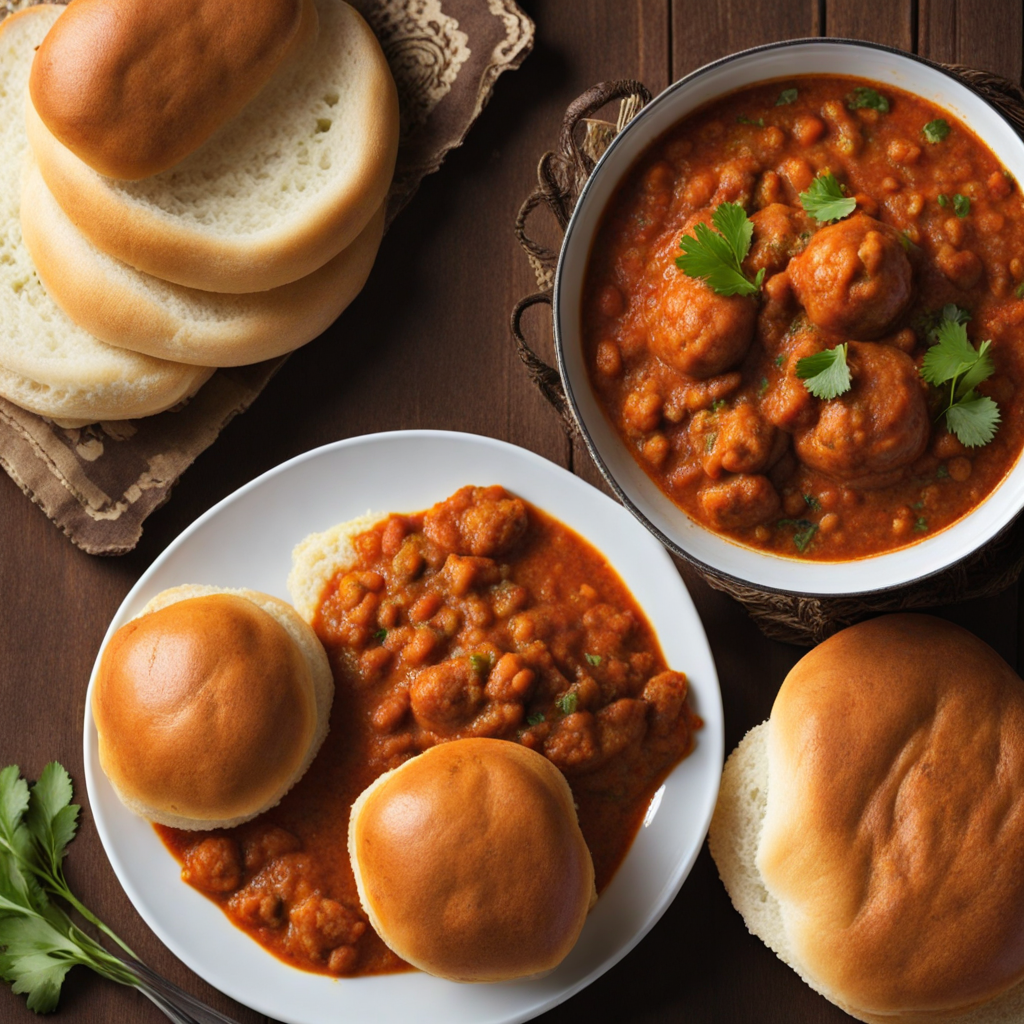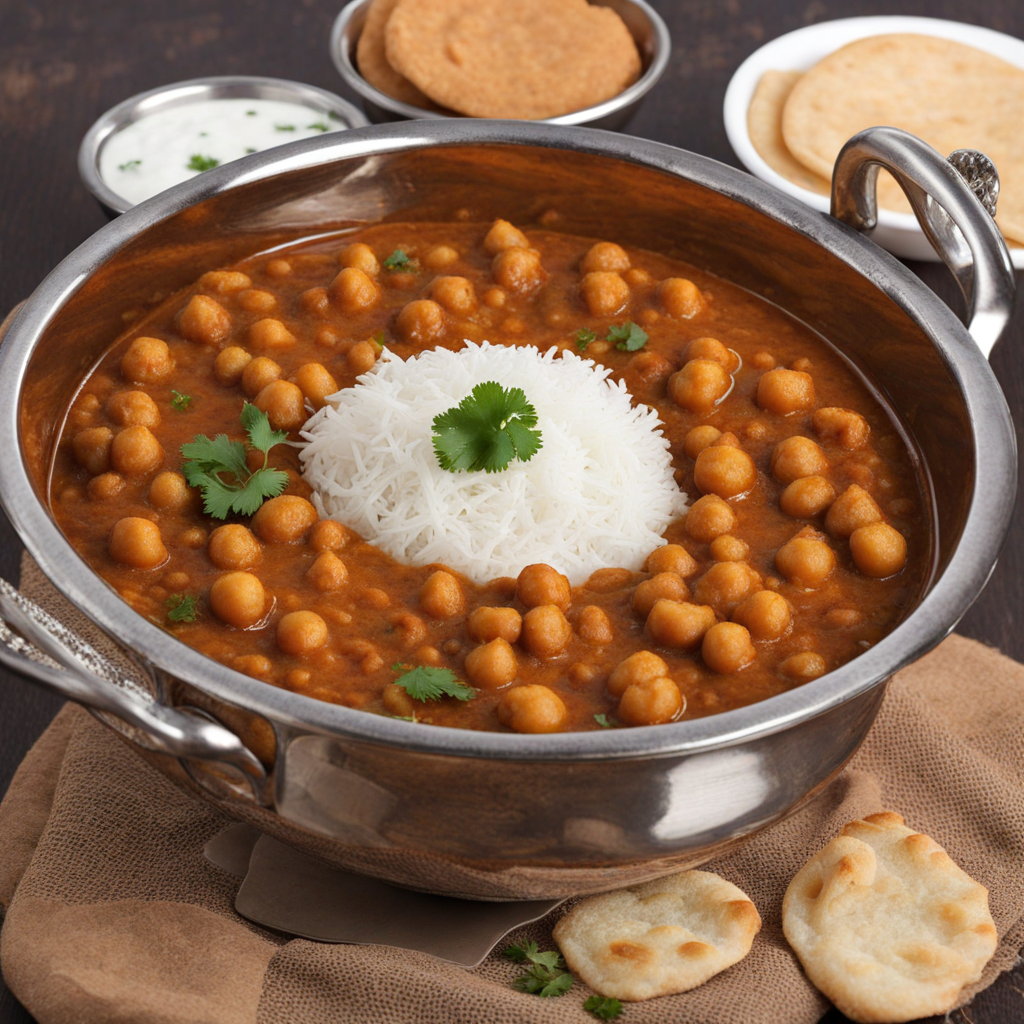Biryani
Biryani is a fragrant, spiced rice dish that is a celebration of flavors and textures, originating from the Indian subcontinent. This culinary masterpiece combines basmati rice with marinated meat—typically chicken, mutton, or beef—along with an array of spices including cardamom, cloves, and cinnamon. The rice is often layered with the marinated meat, allowing the flavors to meld together during cooking, resulting in a dish that is both aromatic and rich. The use of saffron or turmeric not only enhances the flavor but also gives the rice a stunning golden hue, making it visually appealing as well. Each region in India has its own unique take on biryani, reflecting local ingredients and cooking techniques. For instance, Hyderabadi biryani is known for its spicy flavor and use of fried onions, while Lucknowi (Awadhi) biryani features a more delicate and subtle flavor profile, often cooked using the dum method where the pot is sealed with dough to trap the steam. Accompaniments such as raita (a yogurt-based side dish) or salan (a spicy curry) complement the richness of biryani, elevating the dining experience. The texture of biryani is another element that sets it apart; the rice is fluffy and separated, while the meat is tender and succulent. The layering process allows for a delightful mix of flavors in every bite, making each serving a unique experience. Whether enjoyed at a festive gathering or a casual meal, biryani is more than just food—it's an experience that brings people together, inviting them to savor the intricate flavors and the cultural heritage of India.
How It Became This Dish
The history of बिरयानी, a dish that has become synonymous with Indian cuisine, is a rich tapestry woven with threads of culture, migration, and culinary innovation. Its origins can be traced back to the Persian word "birian," which means "fried before cooking." The dish is believed to have been introduced to the Indian subcontinent by the Mughals in the 16th century, who brought with them their culinary traditions and a taste for aromatic rice dishes. The earliest mentions of biryani in India can be found in the royal kitchens of the Mughals, particularly during the reign of Emperor Akbar. He is often credited with popularizing biryani, and it was during this time that the dish began to evolve. The Mughal emperors had an affinity for elaborate banquets and lavish meals, and biryani quickly became a staple in their culinary repertoire. The traditional method of preparing biryani involved layering marinated meat and partially cooked rice, which was then sealed and cooked together. This technique not only preserved the flavors but also created a harmonious blend of spices and aromas. As biryani spread across the Indian subcontinent, it took on regional variations that reflect local tastes and ingredients. For instance, in Hyderabad, the famous Hyderabadi biryani emerged, characterized by its use of saffron, yogurt, and fried onions, along with the unique dum cooking method. This style emphasizes slow cooking in a sealed pot, allowing the flavors to meld beautifully. The Hyderabadi biryani often features marinated meat, either chicken or mutton, cooked with fragrant basmati rice, resulting in a dish that is both visually stunning and rich in flavor. In contrast, Lucknow (formerly known as Awadh) boasts its own variant known as Awadhi biryani. This style is marked by its delicate flavors and the use of a unique cooking technique called "kacchi biryani," where raw marinated meat is layered with rice and cooked together. The spices used in Awadhi biryani are generally milder, aiming to highlight the quality of the meat rather than overpower it with heat. The emphasis on presentation and the artistic arrangement of ingredients reflects the refined tastes of the Awadhi nobility. Moving to the western part of India, Maharashtra has its own distinctive take on biryani, particularly the Bombay biryani. This version is known for its use of potatoes along with the meat, a practice that likely originated from the influence of local culinary traditions. The Bombay biryani is characterized by its spiciness, often incorporating a variety of chilies to cater to the palate of the region. The dish is typically garnished with fried onions and served with a side of raita, a cooling yogurt-based condiment. The southern states of India also have their own interpretations of biryani, with Thalassery biryani from Kerala and Ambur biryani from Tamil Nadu standing out. Thalassery biryani utilizes a short-grain rice variety called "kaima" or "jeerakasala," which absorbs flavors exceptionally well. Meanwhile, Ambur biryani is known for its tangy flavor profile, attributed to the use of tamarind and a variety of spices that reflect the local palate. Through the centuries, biryani has transcended its royal origins and become a popular dish enjoyed by people from all walks of life. Street vendors, family gatherings, and festive occasions now feature biryani, making it a beloved staple across India. Its versatility allows for numerous adaptations, including vegetarian versions that replace meat with vegetables, paneer, or legumes, catering to the diverse dietary preferences found in the country. The cultural significance of biryani extends beyond its delicious taste; it is often associated with celebrations and gatherings. In many Indian households, biryani is a symbol of hospitality and is traditionally prepared for weddings, festivals, and special occasions. The communal aspect of sharing biryani, often served in large quantities, fosters a sense of togetherness and celebration among family and friends. In contemporary times, biryani has gained global recognition, with Indian restaurants around the world offering their unique interpretations of this classic dish. The fusion of traditional recipes with local ingredients has led to innovative biryani variations, such as the California biryani or the Mexican biryani, showcasing the adaptability of this culinary masterpiece. The rise of food delivery services and the influence of social media have further popularized biryani, making it a go-to comfort food for many. Viral food trends featuring biryani, such as the "biryani challenge" or extravagant biryani platters, have captured the attention of food enthusiasts and influencers alike, showcasing its enduring appeal. In addition to its culinary evolution, biryani has inspired a plethora of literature, art, and cinema. It has become a symbol of cultural identity, reflecting the rich history of the regions where it is prepared. Documentaries, cookbooks, and films often highlight biryani as a centerpiece of Indian cuisine, emphasizing its historical significance and regional diversity. In summary, the history of बिरयानी is a testament to the confluence of cultures, flavors, and traditions that have shaped Indian cuisine over the centuries. From its royal Mughal origins to its status as a beloved dish enjoyed by millions, biryani exemplifies the dynamic nature of culinary heritage. Its ability to adapt and thrive in various contexts speaks to its universal appeal, ensuring that it remains not just a meal, but a celebration of community and culture.
You may like
Discover local flavors from India







